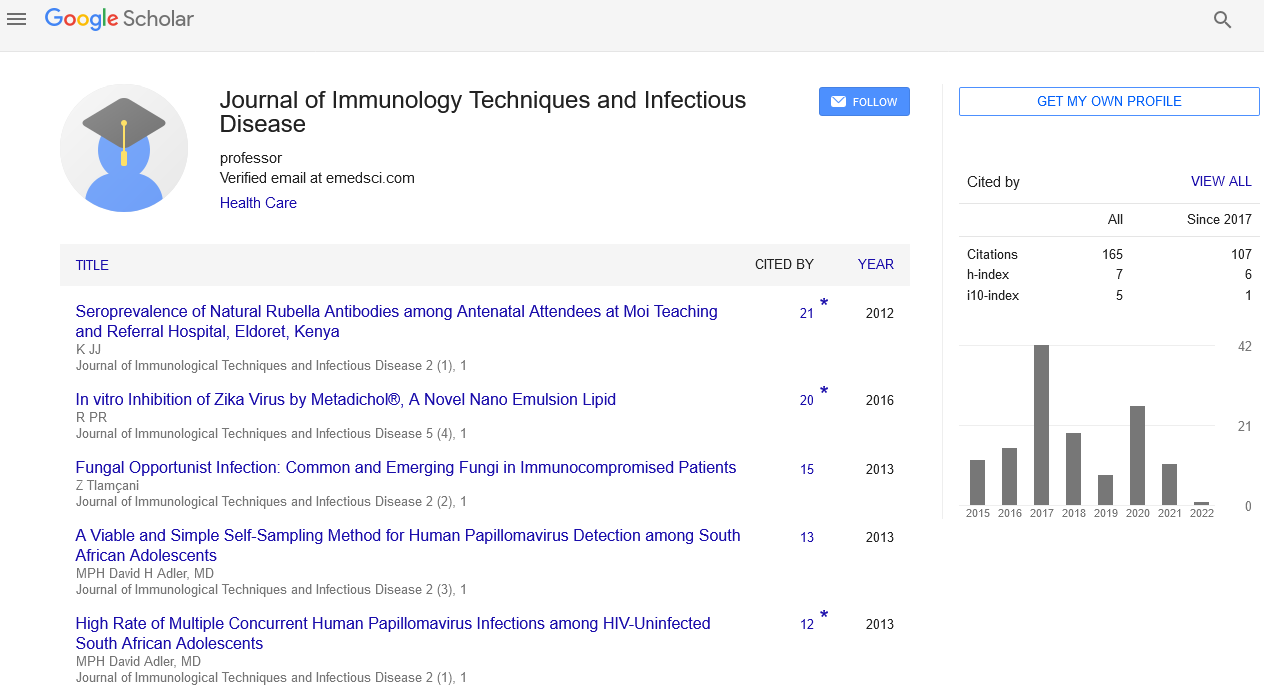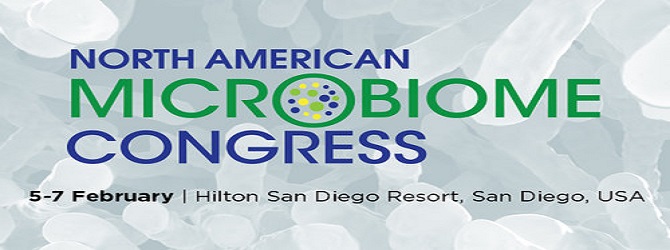Perspective, J Immunol Tech Infect Dis Vol: 13 Issue: 1
Microbiology: Structure, Function, Diversity, and Interactions with the Environment and Human Organizes
Killen Marta*
1Department of Medicine, University of Chicago, Chicago, USA
*Corresponding Author: Killen Marta,
Department of Medicine, University of
Chicago, Chicago, USA
E-mail: marata.kil@gmail.com
Received date: 01 March, 2024, Manuscript No. JIDIT-24-135157;
Editor assigned date: 04 March, 2024, PreQC No. JIDIT-24-135157 (PQ);
Reviewed date: 18 March, 2024, QC No. JIDIT-24-135157;
Revised date: 26 March, 2024, Manuscript No. JIDIT-24-135157 (R);
Published date: 04 April, 2024, DOI: 10.4172/2329-9541.1000371.
Citation: Marta K (2024) Microbiology: Structure, Function, Diversity, and Interactions with the Environment and Human Organizes. J Immunol Tech Infect Dis 13:1.
Description
Microbiology, the study of microscopic organisms, encompasses a wide and diverse array of life forms that play essential roles in shaping the world. From disease-causing pathogens to beneficial microbes essential for life, microbiology provides insights into the fundamental processes of life, ecology, and human health.
Microbial universe: Diversity and complexity
Microorganisms, or microbes, are ubiquitous in nature, inhabiting essentially every environment on Earth, from deep-sea hydrothermal vents to polar ice caps, soil, air, and the human body. Microbes encompass a wide range of life forms, including bacteria, viruses, fungi, protozoa, and archaea, each with unique morphological, physiological, and genetic characteristics. Despite their small size, microbes collectively wield immense ecological, industrial, and medical significance, influencing nutrient cycling, biogeochemical processes, and human health.
Bacterial kingdom: Unveiling the prokaryotic world
Bacteria represent one of the most abundant and diverse groups of microorganisms, inhabiting a wide range of habitats and displaying remarkable adaptability and metabolic diversity. Bacterial cells vary in size, shape, and structure, with distinct features such as cell walls, flagella, pili, and capsules facilitating their survival and interactions with the environment. Bacteria play essential roles in nitrogen fixation, carbon cycling, food production, and human health, serving as commensals, symbionts, or pathogens.
Viral World: Agents of infectious disease
remarkable genetic diversity and evolutionary adaptability, enabling them to infect a broad range of hosts and cause infectious diseases in humans, animals, and plants. Viral pathogens such as influenza, HIV, SARS-CoV-2, and Ebola pose significant threats to global health, emphasizing the importance of viral surveillance, prevention, and antiviral therapies.
Fungal kingdom: Masters of decomposition and pathogenesis
Fungi comprise a diverse group of eukaryotic microorganisms, including yeasts, molds, and mushrooms, with distinctive cellular structures and modes of reproduction. Fungi play critical roles in nutrient recycling, decomposition, and symbiotic relationships with plants, contributing to ecosystem stability and productivity. However, certain fungal organisms can cause opportunistic infections in immuno-compromised individuals or induce allergic reactions and mycotoxin contamination in food and agricultural products.
Protozoan parasites: Agents of disease and biological complexity
Protozoa are unicellular eukaryotic organisms with diverse morphological and behavioral adaptations, ranging from free-living organisms in aquatic environments to parasitic forms that infect humans and animals. Protozoan parasites such as Plasmodium spp., Trypanosoma spp., and Giardia lamblia are responsible for a variety of debilitating diseases, including malaria, sleeping sickness, and diarrheal illnesses, particularly in regions with inadequate sanitation and healthcare infrastructure.
Microbial interactions: From mutualism to pathogenesis
Microorganisms engage in complex interactions with other microbes, host organisms, and the environment, shaping ecosystem dynamics, disease transmission, and microbial evolution. Mutualistic symbioses, such as the gut microbiota-host relationship, provide mutual benefits to both parties, including nutrient metabolism, immune regulation, and protection against pathogens. However, dysbiosis of microbial communities can establish to illness conditions inflammation, and susceptibility to infections, highlighting the delicate balance of microbial interactions in health and disease.
Applications of microbiology: From biotechnology to bioremediation
Microbiology finds diverse applications in biotechnology, medicine, agriculture, and environmental science, driving innovation and addressing global challenges. Biotechnological advances enable the production of therapeutic proteins, vaccines, biofuels, and industrial enzymes using microbial hosts such as bacteria, yeast, and algae. Microbial bioremediation techniques leverage the metabolic capabilities of microbes to degrade pollutants, detoxify contaminated environments, and restore ecosystem health.
 Spanish
Spanish  Chinese
Chinese  Russian
Russian  German
German  French
French  Japanese
Japanese  Portuguese
Portuguese  Hindi
Hindi 
